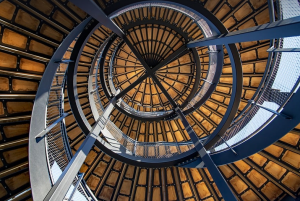
Ready to Dive into the World of Scientific Inquiry?
So you’re embarking on a science fair adventure, huh? That’s awesome! It’s a chance to explore the wonders of science, put your curiosity to the test, and maybe even win some bragging rights. But before you dive headfirst into your experiment creation, let’s talk about creating a solid research plan that will set you on the path to scientific triumph.
Think of this plan as your compass, guiding you through the exciting journey ahead. It’ll help prevent any “oops!” moments and ensure you explore the science behind your chosen project in an organized and impactful way.
The Foundation: Defining Your Project
First things first, let’s get a bit introspective. What sparks your curiosity? What questions about our world are you itching to answer? A good science fair project is driven by genuine interest and the desire to unveil some cool scientific secrets!
Before diving into any experiments, take some time to brainstorm: What kind of impact do you want to make? Do you want to solve a real-world problem or simply explore a fascinating concept? Ask yourself these questions. The answers will provide the foundation for your project.
Once you have a general direction, it’s time to dive deeper. Do some research! Look into existing scientific studies and theories related to your interests. This will help you understand existing knowledge and identify potential gaps that your experiment could explore.
The essence of a good science fair project is the “how” behind the “why.” You want to answer questions like: What exactly are we trying to investigate? How does this connect to real-life situations?
Exploring Your Research
Now that you have a general direction, it’s time for the investigative fun! This is where your creativity kicks in. The key here is to be meticulous and detailed. Let’s say you’re interested in learning about the impact of different types of music on plant growth.
Imagine this: You start by researching how plants react to varying light conditions, and then you formulate a hypothesis – an educated guess about what you expect to find. Think about your scientific method in action! Design an experiment to test whether classical music or heavy metal music impacts plant growth better than silence.
You’ll need to consider the variables in your experiment. This includes things like: the type of plants used, the length of time they are exposed to the different types of music, and how you measure their growth.
To ensure accuracy, record all observations meticulously! Take detailed notes, photograph your plants at regular intervals, and even try recording sound levels during each session. This meticulousness will form the basis for your presentation later on!
Defining Your Research Questions
So, you’ve got questions flying everywhere! Time to crystallize those inquiries into specific research questions.
Ask yourself: What is the main thing I want to learn? Is there a difference in growth between classical and heavy metal? Does exposure affect plant height or leaf size? It could even be something as simple as “Does music impact plant yield?”
To ensure clarity, form specific questions about your hypothesis. For example: “Will plants exposed to classical music grow taller than those exposed to heavy metal?” Each question should be focused and directly related to your research goals.
The “How” of the Experiment
Okay, now it’s time to get hands-on with your experiments! You want to ensure you’re collecting reliable data. Here, clarity is key: Define how you’ll conduct your experiment. For instance, what type of plants will you use? How will you set up your conditions?
You need to define your materials and tools. For example, if you want to explore the impact of music on plant growth, you’d need to gather specific types of plants (e.g., beans or sunflowers) and choose your music sources (classical music albums, heavy metal albums, or silence). Having a clear plan will ensure that everything runs smoothly.
Think about potential variables! These are the factors other than your music source that could influence plant growth (e.g., humidity, sunlight exposure, water amount). You need to control for these variables as much as possible to make sure you’re only measuring how music affects growth.
Data Collection: The Heart of Your Project
This is where your scientific journey takes a turn towards the tangible! You’ll need to record data throughout your experiment. This could be as simple as measuring plant height, leaf size or even capturing pictures to track changes.
Make sure you record detailed notes about each observation: Take measurements regularly, document any issues you encounter, and keep a keen eye on your experiment’s progress. The process of collecting data is a vital part of the scientific method.
The Power of Observation: Your Experiment’s Key
After you run your experiment, it’s time to analyze your results! This means looking at all the data you collected and figuring out what patterns emerged.
You can do this by comparing different groups in your experiment. For instance, if you’re comparing plant growth under classical music vs. heavy metal music, look for any differences or similarities between them. Analyzing the data will provide valuable insights into whether your hypothesis was right!
Presenting & Reflecting: The Final Act!
So, you’ve done the hard work – now it’s time to showcase your findings. Craft a compelling presentation that tells the story of your research journey! Include clear visuals like graphs and charts to illustrate your data points, and be sure to answer the most crucial questions: Did your experiment support or challenge your hypothesis? What did you learn from this experience?
The science fair is a chance to share your knowledge with others and inspire them. Your research plan acts as your roadmap, helping you navigate the exciting world of scientific discovery, all while learning valuable skills that will serve you well beyond the science fair stage. So, go out there, explore those scientific questions, and have some fun!



